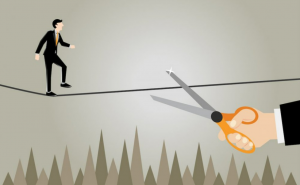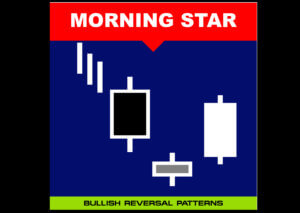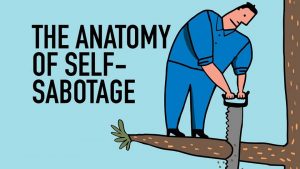We are on a mission here! We’ve dismantled some major fallacies and we are finally ready to come undone, free of misconceptions and wishful thinking. We’ve understood how exactly to approach our trading plans in article one and how our emotions can serve us in article two of this series. If you are too ready for some real truth once again, keep on reading. We are bringing in some more clarity today.
- Part 3: Don’t Listen to Experts
This is another one of our favorites here. Don’t listen to experts. Why would you listen when you know better? This is a special treat for anyone in love with sabotage. You may be surprised how deep this belief goes and how far it reaches. No, it’s not only about everything you read before. Just, read the whole article and then form a judgment.
So, let’s get right to it.
This is a story about Bob, which we heard from one of the most prominent traders we know. Bob started trading when he read a blog post on how he can make a lot of money trading. His eyes popped when he saw the monthly return. He finished reading in the blink of an eye and discovered his new calling. He will be a successful trader!
Bob started his demo account with 20 thousand USD. With a risk ratio of 1:50, he managed to raise his account to almost 100 thousand USD in just a few months. Interestingly enough, Bob only used stop losses upon entry when trades would unfold to his benefit. He thought that he had enough in his account to bear the consequences of a trade going against him, so he would just wait for the scenario to change back to positive.
What do you think Bob’s approach lacked the most?
If you don’t know, we’ll help you with some additional questions:
No. 1: Could Bob differentiate between the money in his account and money management?
No. 2: Do you believe that Bob ever enquired about proper money management skills?
No. 3: Was Bob ready to settle for less?
You’ve got three big NOs here. Bob served us well to learn an important lesson.
Warren Buffett is no lunatic. Why would he not secure a greater yearly return? Do you think a man who achieved that much would ever not use ways to protect his trades? Imagine how unusual it may sound for someone who has just started to trade that 10—15% return is amazing when they managed much more on a monthly level. Why would anyone on earth be using stop losses when there is another way, these novice traders may think.
We wish to discover a trader who has managed to maintain a steady-growing account year after year this way, but most professionals would agree that this approach is simply unsustainable. If you wait for a trade to go your way, you can – and probably will – deplete your account of every last dime you’ve got. The only way to make this big of a change in your account is to use reckless money management.
When you are so eager to increase your income no matter the consequences, what you get is the opportunity to kill two birds with one stone – see your account skyrocket and then be completely shattered. These results are just like Newton’s laws of physics – inevitable.
Now, let’s quickly go back to our previous article on sabotaging strategies. What emotions do you think Bob felt throughout his experience? Was he calm and composed or half-crazed with euphoria and excitement? We believe it was the latter. We think that the best advice for Bob, the main protagonist of our story today, would be to go and cash out everything before he manages to waste it all. Would you agree?
Now if you are wondering if you could go above the standard 2% risk and maybe use stop losses in a different, more lenient way, the answer is yes. The only questions left are what kind of results you are getting with this approach and whether you are doing your account a disservice.
Now, make sure to write this down in your notes and underline it as many times as it takes for the message to get engraved in your memory:
❝Reckless money management is a sure way to sabotage my strategy.❞
If you are still wondering why, the answer is simple – it won’t render lasting results. So again we go back to the previous article and ask you – what is your aim? Are you in for the long haul or you want quick results? What is your standpoint in trading?
Don’t forget that the internet is a safe haven for tricksters and some more serious frauds who will promise anything for you to believe that your dreams can come true. Now more than ever, there is enough room for every form of deviant behavior to be wrapped up nicely for all manipulative intents and purposes. We see this with trading robots (EAs) where the results you think you see on their web pages are not the actual results you need to see and have after you make a purchase. As we explained before in this series of articles on sabotage, do not believe everything you read. Ask for clarifications and use the power of your analytical mind.
Speaking about analysis…Bob explained that he had enough margin to wait out for as long as it was needed until the trade started to move in his favor again. The problem is that, in reality, dropping from a 50 thousand USD account down to 40 thousand USD is already very, very hard to recover from. Realistically speaking, you would need to make a 25% return, a return better than Warren Buffet’s yearly average, just to make up for what you lost. On the other hand, with a standard 2% risk profile, you would need to take 11 consecutive losses to manage to get this low, and that would be without any exit plan except by a stop loss at 2% risk per trade.
The point of everything you do in terms of money management and trade management is to make everything happen to your benefit. As we explained in the previous articles, you are a good trader if you manage to not just win but protect your account from losses as well.
Even professionals traders will admit that, at times, they deviated from the system they advise others to follow. Still, this happened under exceptionally favorable market conditions and after many, many years of trading experience. We need to create a steady foundation if we want to build a palace.
What do you think happened to Bob?
In the end, Bob realized that he was losing more and more, so he visited this one website where he was told to watch and read further.
- More reading, more learning, he shouted.
- Bob said his goodbyes and closed off his account.
- Like the famous meme says… Don’t be like Bob.
- Don’t sabotage your trading. Be a smart trader.
- Choose quality, not quantity.
- Choose sustainability, not instant cash.
- Choose everlasting content, not passing news.
- Choose to grow, not to be praised.
It is, especially at the very beginning, important not to think that you are above it all. With some humility and eagerness to learn, you will not fall for the trap that Bob did. Pick wisely the content you will let get to you and learn from other people’s experiences. You don’t have to suffer as much.
See you next time with the very last article on how to sabotage your strategy. Until then, think of the ways in which you possibly ignored expert opinion to your detriment and then try to add on the results of the trading psychology test we talked about in the previous article to get to the why’s.






